Septoplasty in Guadalajara
Search and Compare the Best Clinics and Doctors at the Lowest Prices for Septoplasty in Guadalajara

Find the best clinics for Septoplasty in Guadalajara
With Medijump you can browse 3 facilities offering Septoplasty procedures in Guadalajara. The cheapest price available is $1,417 in Guadalajara
Septoplasty in Mexico
Price: $ 1,417
Septoplasty in Guadalajara
Price: $ 1,417
Septoplasty in Los Algodones
Price: $ 1,489
Romania offers the best prices Worldwide
Price: $ 404
From 16 verified reviews
Jose Luis Vivanco, 17 September 2019
Plastic surgery with the best Doctors, unique attention with a comprehensive treatment of patients.
Center for ENT and Voice Disorders, located in Av Terranova, Guadalajara, Mexico offers patients Septoplasty procedures among its total of 2 available procedures, across 2 different specialties. Currently, there's no pricing information for Septoplasty procedures at Center for ENT and Voice Disorders, as all prices are available on request only, whilst the national average price is approximately $2,543. All procedures and treatments are undertaken by the lead specialist at the Hospital, and they have multiple recognized accreditations, including: ACS - American College of SurgeonsAAO - American Academy of Otolaryngology-Head and Neck SurgeryCMORLCCC - Consejo Mexicano de Otorrinolaringología y Cirugía de Cabeza y Cuello
Dr. Alfonso Ledesma ENT Consultation Office, located in Av Terranova, Guadalajara, Mexico offers patients Septoplasty procedures among its total of 9 available procedures, across 3 different specialties. Currently, there's no pricing information for Septoplasty procedures at Dr. Alfonso Ledesma ENT Consultation Office, as all prices are available on request only, whilst the national average price is approximately $2,543. All procedures and treatments are undertaken by the lead specialist at the Hospital, and they are not accredited by any recognized accreditations institutes
Compare Before & After Photos of _procedure_photos.phpSeptoplasty
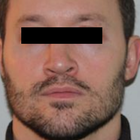
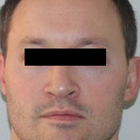
Front view

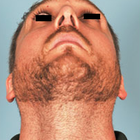
Front view
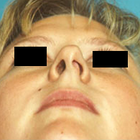
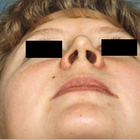
Front view
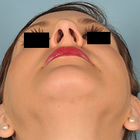

Front view
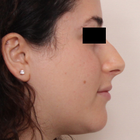
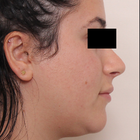
Full-side view
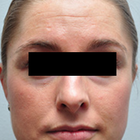
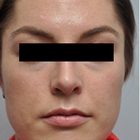
Front view
WHY US?
At Medijump, we're making medical easy. You can search, compare, discuss, and book your medical all in one place. We open the door to the best medical providers worldwide, saving you time and energy along the way, and it's all for FREE, no hidden fees, and no price markups guaranteed. So what are you waiting for?

Free

Best Price

Widest Selection

Risk-Free
What you need to know about Septoplasty in Guadalajara

A septum is a bone and cartilage that separates the nasal cavity of the nose. When your nasal septum is off-center, crooked, or moved to one side of your nose, it is a condition known as a deviated septum and can make breathing difficult. To correct this condition, you may need to undergo Septoplasty, where your septum will be straightened to allow better airflow through your nose. This surgery is the only way to fix a deviated septum. However, septoplasty may also be performed to treat long-term sinusitis, remove nasal polyps, or treat other conditions that block the nasal airways. Sometimes, surgeons also recommend this surgery to stop recurrent nosebleeds and facial pains. For conditions other than deviated septum, surgeons often only recommend septoplasty after ruling out other treatments.
What does a Septoplasty Procedure Involve?
A deviated septum is common, but when the condition is severe, it can block one side of your nose and reduce airflow. It can also contribute to crusting or bleeding. If you experience difficulty breathing through your nose that significantly affects your life, you may want to consider septoplasty. Before the surgery, your doctor will review the details of the surgery and ask you to complete some routine tests, such as a blood test, electrical heart tracing, or X-ray. Be sure to tell your doctor if you have any possible allergies. To prepare for the procedure, you may need to stop taking certain medications at least two weeks before the surgery because they can increase your risk of excessive bleeding and the medications include aspirin, ibuprofen, and other blood-thinners.
Septoplasty can be carried out under local anesthesia or general anesthesia. If you have the surgery under local anesthesia, you should not eat or drink anything after midnight the night before the procedure. Not eating and drinking will prevent you from vomiting and choking if the anesthesia nauseates you during surgery. Your surgeon will start the surgery by making an incision on one side of your nose to access the septum. They will then lift the mucosa lining that covers the cartilage and bone. Next, they will reshape the cartilage and bone to move the deviated septum to the correct position. Extra pieces of bone or cartilage that make barriers will be removed. Then, they will reposition the mucous membrane. You may need stitches to hold the septum and membrane in place. Soft silicone splints are sometimes inserted inside the nostrils to support the septum. The whole procedure takes between 30 to 90 minutes to complete.
How Long Should I Stay in Guadalajara for a Septoplasty Procedure?
Septoplasty is an outpatient procedure, which means you will likely go home on the same day of the surgery after the anesthesia has worn off unless major complications arise. However, you should stay in the Guadalajara for 3-4 days for the initial recovery and follow-up checkups. If your surgeon places splints in the nose, they will be removed within seven days. You may return home when your surgeon allows you as long as there is no complication.
What's the Recovery Time for Septoplasty Procedures in Guadalajara?
You may feel drowsy for a few hours following the surgery and you may also feel pain. However, your surgeon will prescribe medication to help with the pain. Some congestion and bleeding can occur after you are discharged from the hospital as your body recovers, but these symptoms should be gone in 2 weeks. The recovery period varies from one person to another. In general, you should be able to return to work within a few days, but you should allow at least three weeks before going back to your full normal routine. You should also limit your physical activities such as exercise for several weeks to minimize swelling and speed up healing because intense physical activities can increase your blood pressure and lead to bleeding.
What sort of Aftercare is Required for Septoplasty Procedures in Guadalajara?
Your doctor will give you post-operative care instructions, which you will need to follow, The wound on your nose will heal fairly quickly, and your breathing will improve shortly after the procedure. For a quicker recovery, you may need to elevate your head at night to keep the swelling down, wear a button-up shirt so you do not need to pull clothing over your head, and do not blow your nose for at least two to three days after surgery. Avoid drinking alcohol, smoking tobacco, returning to work too soon, strenuous activities, and being in a crowd where people are smoking or coughing.
What's the Success Rate of Septoplasty Procedures in Guadalajara?
The success rate for septoplasty is high, with up to 85% of people experiencing a significant improvement in their nasal blockage after surgery.
However, some people will require a second surgery if they are not satisfied with the results. Septoplasty is a very low-risk procedure, but you should be aware of the possible complications and side effects and these risks can include:
- Bleeding in small amounts is common, but in rare cases, excessive bleeding may occur.
- Infection can occur after septoplasty because the nose is not a sterile environment.
- Toxic shock syndrome is a very rare and life-threatening infection.
- Septal perforation is a small hole that can sometimes develop in the nasal septum during or after the surgery.
- Spinal fluid leak and it is extremely rare.
Other risks such as scarring, and altered nose shape, discoloration of the nose, a decreased sense of smell, tooth or nose numbness, and continuing symptoms are also possible. Other than following your surgeon’s aftercare instructions, keeping the nose clean and washing your hands often can reduce the risks.
Are there Alternatives to Septoplasty Procedures in Guadalajara?
Although most conditions of a deviated septum can only be treated by septoplasty, there are nonsurgical treatments for other nasal blockages to help you breathe better. If your nasal blockage is caused by an allergy, you may take antihistamines from your doctor or over-the-counter. In cases of bacterial infection, your doctor can prescribe antibiotics to help clear the nasal airways.
Whilst the information presented here has been accurately sourced and verified by a medical professional for its accuracy, it is still advised to consult with your doctor before pursuing a medical treatment at one of the listed medical providers
No Time?
Tell us what you're looking for and we'll reachout to the top clinics all at once
Enquire Now

Popular Procedures in Guadalajara
Prices Start From $1,945

Prices Start From $101

Prices Start From $192

Prices Start From $500

Recommended Medical Centers in Guadalajara for Septoplasty

- Interpreter services
- Translation service
- Religious facilities
- Medical records transfer
- Medical travel insurance
- Health insurance coordination
- TV in the room
- Safe in the room
- Phone in the room
- Private rooms for patients available

- Interpreter services
- Translation service
- Religious facilities
- Medical records transfer
- Medical travel insurance
- Health insurance coordination
- TV in the room
- Safe in the room
- Phone in the room
- Private rooms for patients available

- Interpreter services
- Translation service
- Religious facilities
- Medical records transfer
- Medical travel insurance
- Health insurance coordination
- TV in the room
- Safe in the room
- Phone in the room
- Private rooms for patients available
Septoplasty in and around Guadalajara
About Guadalajara
Guadalajara is the second-largest city in Mexico and lies at the heart of the Mexican state Jalisco. The City takes great pride in being the Silicon Valley of Mexico due to the phenomenal growth of its infrastructure, economics, technology, and software in the last three decades. The city is also rich in tradition, culture, and history. It is also home to the world’s famous tequila and mariachi festival
Mexico is also a popular destination for medical tourism. It has more than a dozen cities and border towns specializing in medical care. Guadalajara is one such city and is largely visited by medical tourists from across the world. In particular, a large number of Americans cross the border to seek medical assistance. Low medical cost is the main reason behind the City's immense popularity and makes Guadalajara an ideal destination for medical tourism. Bariatric surgery is 70% cheaper than in the USA and dental procedures are 60% less expensive.
The world-class hospitals in Guadalajara offer a wide range of medical services including general surgery, plastic surgery, infertility, stem cell therapy, pediatrics, oncology, and orthopedics. The highly qualified doctors and nurses provide the highest level of care, service, and hospitality and are also well versed in English. Guadalajara is not only a perfect choice for medical treatments and procedures but also the best spot for recuperation.
Salutaris Medical Center, San Javier Hospital, the fertility institutes, OLA Obesity & Advanced Laparoscopic Surgery Clinic, and the Mexico Americano are some of the better-known hospitals in Guadalajara. They have access to the latest medical procedures and cutting-edge technologies.
Popular areas in Guadalajara
The Metropolitan area of Guadalajara houses approximately 5 million people. The city has a handful of safe and trendy neighborhoods. You will find a large population of expatriates in areas like Providencia, Lake Chapala, Ajijic, Chapalita, Chapultepec, and Zapopan. The neighborhoods have many upmarket restaurants, bars, cafes, boutiques, and authentic Mexican food stalls. Lake Chapala is a picturesque lake, from where you can take a cruise to the beautiful island of Scorpio.
- Guadalajara Cathedral: The centuries-old Cathedral lies in the Plaza De Armas, Zona Centro, and although not a particularly big or extravagant Cathedral, it was built in 1541 in the old Spanish colonial style with its neo-gothic spires.
- Expiatory temple: This is the finest religious structure built in a neo-Gothic style. The church has a lavishly embellished exterior. The unique German clock and fine stained-glass windows never fail to fascinate its visitors.
- The Government Palace: Located at the Plaza De Armas, the splendid palace is an absolute visual treat. It took almost a century to construct this historical landmark. The old staircase and murals depicting the heroes of the war of independence are the highlights.
- The regional museum of Guadalajara: The museum is worth a quick visit. 14 dioramas, local fossils, and 800 kg meteorite are the major attractions.
- Avenida Chapultepec: You can experience the best nightlife here as there is a selection of bars with salsa dancing, hula hooping, and Mexican folk dance.
Weather and Climate in Guadalajara
Guadalajara has a warm and moderate climate. The City’s elevation ensures cooler evenings. The weather is spring-like for most of the year. Guadalajara's average temperature is 19.5°C. The average annual rainfall is 941 mm. During the month of August, the City receives a generous amount of rainfall.
March is the driest month of the year with little to no precipitation at all. The warmest months of the year are April, May, and June and the temperature can reach 35°C.
December and January are cooler with an average temperature of 25°C. The temperature may fall too even 5°C during the nights. If you are planning to visit the City during the winter, then pack suitable warm clothing to withstand the cold.
Getting around in Guadalajara
Located 16 km away from the city center, is Guadalajara International Airport. It is Mexico's third busiest airport. The airport handles cargo flights and domestic flights to other Mexican cities and the USA. Wider transport options are available to cater to the needs of the locals and the tourists. The city is well connected by various modes of transportation.
- By foot: As Guadalajara is quite compact, you can simply walk around the city. The city center houses most of the tourist spots. The streets are hassle-free and relaxed.
- By bus: Macro-buses, which are large in number, are the cheapest means of transport. It costs less than 50 cents for a one way to travel in a macro-bus. In case of TUR express buses, the cost is exactly 50 cents one way. If you are a regular commuter, you can buy a transit card and swipe every time you board the bus.
- On a Metro: Most office goers prefer the metro services. You just need to pay 40 cents for a minimum distance ride.
- Other Options: You can also rent bicycles, taxis, and cars to travel to nearby cities. A valid US driving license is more than enough to drive a car here.
Tourist Visa in Guadalajara
A valid tourist visa is essential to visit Mexico. Citizens from countries like India, Russia, and China should apply for a Mexican Tourist Visa, 28 days before the date of entry. You should also submit copies of your travel tickets. Visa fee may cost you approximately USD 22 but this is subject to change from time to time.
Mexico provides visa exemption to the citizens of 67 nations. Citizens of Canada, USA, Denmark, Germany, Switzerland, and Japan can enter Mexico without a valid tourist visa and can stay for a period of 6 months.
You can even extend your stay by providing the required documents before your visa expires.
Additional Information
- Mexican Peso is the official currency of Mexico. 1 USD equals 18.77 Mexican Peso.
- Being the native language, people throughout Guadalajara speak Spanish. Yet, most of the locals can speak English.
- You will find plenty of banks and ATMs across the city. Most restaurants and big shops accept payments by credit cards.
- A large majority of the population residing in Guadalajara are Roman Catholics.
- Public holidays in Guadalajara:
- New Year's Eve (January 1)
- Independence Day (September 16)
- Revolution Day (Third Monday of November)
- Three King's Day (January 6)
- Easter
- Mother's Day.
Popular Searches
- Plastic Surgery in Thailand
- Dental Implants in Thailand
- Hair Transplant in Thailand
- Breast Augmentation Thailand
- Gastric Sleeve in Thailand
- Gender Reassignment Surgery in Thailand
- Laser Hair Removal in Bangkok
- Botox in Bangkok
- Dermatology in Bangkok
- Breast Augmentation in Bangkok
- Coolsculpting in Bangkok
- Veneers in Turkey
- Hair Transplant in Turkey
- Rhinoplasty in Turkey
- Stem Cell Therapy in Mexico
- Rhinoplasty in Mexico
- Liposuction in Mexico
- Coolsculpting in Tijuana
- Rhinoplasty in Korea
- Scar Removal in Korea
- Gastric Sleeve in Turkey
- Bone Marrow Transplant in India
- Invisalign in Malaysia
- Plastic Surgery in the Dominican Republic
- Tummy Tuck in the Dominican Republic
- Plastic and Cosmetic Surgery in Poland
- Rhinoplasty in Poland
- Hair Implant in Poland
- Dental Implants in Poland
- IVF in Turkey

